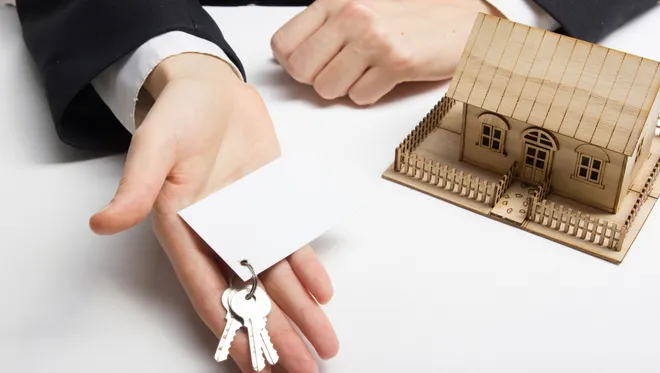Buying your first home is exciting, but it can also feel like a puzzle with too many pieces. Rising prices, tricky loans, and tight markets make it tough for first-time buyers to step in. But don’t worry — there are affordable solutions that can help you find your way.
And in this article, we’re going to cover all these affordable solutions.
Government Programs and Assistance
One of the best ways to afford a home is to use government help. Many countries offer programs specifically for first-time buyers. These programs can give you grants or low-interest loans that cut the cost significantly. Some programs even help with down payments or closing costs.
The key is to research what’s available in your area. For example, in the U.S., there are FHA loans and state-level grants that make home buying easier. Often, you need to meet income limits or buy in certain areas to qualify.
“Most first-time buyers don’t realize how much support is out there. Tapping into local and federal programs can turn an impossible budget into a real opportunity,” comments Dan Close, Founder and CEO of BuyingHomes.com.
But if you do, this help can save you thousands of dollars. Make sure to ask your real estate agent or lender about programs you can apply for early in your search.
Exploring Alternative Home Options
Another popular choice is tiny homes or modular homes. Tiny homes are small but well-designed houses that cost less to build and maintain. They are perfect for people who want simplicity and lower bills. Modular homes are built in factories and then assembled on-site. They often cost less than traditional homes because of faster construction and less waste.
Also, you can buy a fixer-upper. These homes need some work but come at a lower price. If you’re handy or willing to invest time and effort, this can be a smart way to build equity quickly. However, fixer-uppers come with risks like unexpected repair costs, so be sure to get a home inspection before buying.
Saving Strategies for a Down Payment
Saving for a down payment is often the biggest hurdle for first-time buyers. But small steps add up over time. Start by setting a clear savings goal and timeline. Open a separate savings account dedicated only to your home fund to avoid spending it by accident. Try to automate transfers so money moves into your home fund every payday.
Cutting back doesn’t mean giving up everything fun. Simple changes like cooking at home more often, cancelling unused subscriptions, or shopping smarter can help. Also, consider using any bonuses, tax refunds, or gifts toward your down payment. Many families give money to help with home buying.
If you are employed, check if your workplace offers a savings plan or assistance for home buyers. Some employers partner with lenders to provide help.
Choose the Right Mortgage
Not all mortgages are the same, and picking the right one can save you a lot over time. Some loans require a large down payment but have lower interest rates. Others allow low down payments but come with extra fees or insurance. FHA loans, VA loans, and USDA loans are popular among first-time buyers for their low down payment options.
It’s smart to shop around and compare offers from different lenders. Look beyond the interest rate and check the total cost, including fees. You can also get help from mortgage brokers who work with multiple lenders and can find the best fit for your situation. Before you apply, get pre-approved for a loan. This shows sellers you are serious and able to buy, which can strengthen your offer.
Work with the Right Professionals
Buying a home is easier when you have the right team. A real estate agent who knows the local market and works with first-time buyers can guide you through the process and find homes in your price range. They help with paperwork and negotiation, saving you time and stress.
A mortgage broker can also help you find the best loan option. And once you find a home, a home inspector is crucial to check the property for hidden problems. This can save you from costly surprises later. Also, a financial advisor or counselor can help you plan your budget and avoid mistakes.
Negotiate and Make Smart Offers
Making a strong but smart offer is one of the most important steps in buying your first home. Don’t just guess the price — start by researching recent sales of similar homes in the neighborhood. Look at price trends over the last 6–12 months. This gives you a clear idea of what’s reasonable and helps you avoid overpaying.
Avoid leading with your highest bid. Instead, begin with a competitive offer that leaves room to negotiate. Sellers often expect some back-and-forth, especially if the home has been on the market for a while. If the market is hot, you can still stand out in other ways — such as offering a quicker closing date, a larger earnest money deposit, or fewer contingencies.
Adding a personal letter to the seller can also make a surprising difference. Share why you love the home, how you see your future there, and a bit about yourself. It builds connection and sometimes sways the decision, especially in emotional sales.
Also, budget beyond the sticker price. Set aside money for home inspection costs, appraisal fees, insurance, and moving expenses. After the inspection, review the report carefully. If any issues come up — like a leaky roof or outdated wiring — you can ask the seller to fix them or lower the price. Don’t be afraid to walk away if the deal no longer feels fair. Staying firm protects your long-term investment.
Consider Location and Long-Term Value
The house itself matters, but the location can impact your life even more. A home in the right area can save you time, reduce stress, and grow in value over the years — helping you build equity and wealth.
Start by looking at neighborhoods that are affordable now but showing signs of improvement. Are there new restaurants, schools, or shopping centers popping up? Is the local government investing in infrastructure like parks, sidewalks, or public transit? These are good signs that the area could appreciate in value.
Pay attention to future city plans too. You can often find development updates through local news or city planning websites. Areas set for upcoming projects usually grow faster in value.
Transportation is another key factor. Easy access to highways, train stations, or major bus routes can make your daily routine much smoother. Bonus points for neighborhoods with walkability or safe bike lanes — these are becoming big selling points, especially for younger buyers and families.
Conclusion
Buying your first home isn’t always easy, but it’s not impossible either. With a clear plan, a little patience, and the right support, you can find a place that truly feels like yours. Focus on what you can afford, stay open to growing areas, and don’t rush the process. Every step you take — from saving to negotiating — brings you closer.
Remember, it’s okay to ask questions, take your time, and learn as you go. Homeownership is a journey, not a race. And with the right choices, you’ll get there — one smart move at a time.
YOU MAY ALSO LIKE: Why Asphalt Shingles Remain a Popular Residential Choice for Westminster Homes











